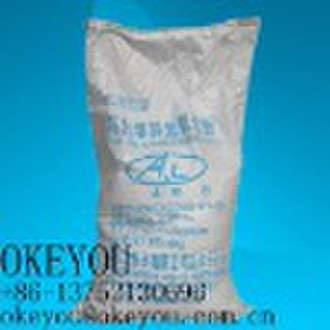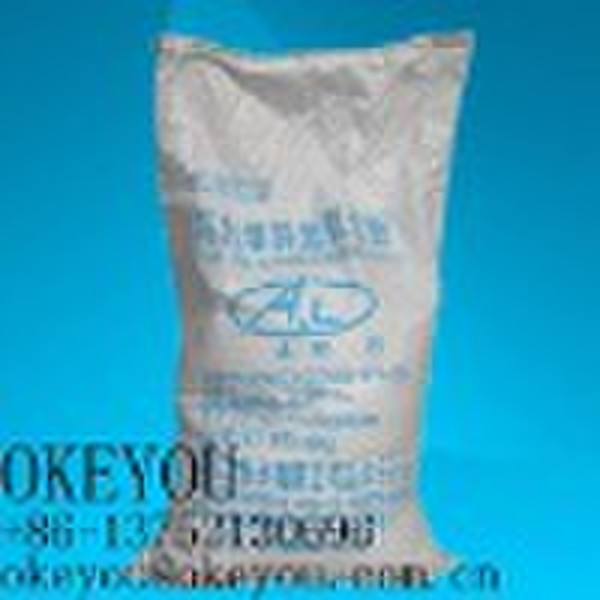Catalog
-
Catalog
- Agriculture
- Apparel
- Automobiles & Motorcycles
- Beauty & Personal Care
- Business Services
- Chemicals
- Construction & Real Estate
- Consumer Electronics
- Electrical Equipment & Supplies
- Electronic Components & Supplies
- Energy
- Environment
- Excess Inventory
- Fashion Accessories
- Food & Beverage
- Furniture
- Gifts & Crafts
- Hardware
- Health & Medical
- Home & Garden
- Home Appliances
- Lights & Lighting
- Luggage, Bags & Cases
- Machinery, Hardware & Tools
- Measurement & Analysis Instruments
- Mechanical Parts & Fabrication Services
- Minerals & Metallurgy
- Office & School Supplies
- Packaging & Printing
- Rubber & Plastics
- Security & Protection
- Service Equipment
- Shoes & Accessories
- Sports & Entertainment
- Telecommunications
- Textiles & Leather Products
- Timepieces, Jewelry, Eyewear
- Tools
- Toys & Hobbies
- Transportation
Filters
Search
Aluminum hydroxide for toothpaste AL(OH)3 H-WF-1
original price: 855,00 USD
Tianjin, China

Sara Lee
Contact person
Basic Information
| Model Number | H-WF-1 |
|---|---|
| CAS No. | 21645-51-2 |
| Other Names | alumina powder |
| MF | Al(OH)3 |
| EINECS No. | 244-492-7 |
| Place of Origin | Shandong China (Mainland) |
| Grade Standard | Agriculture Grade |
| Purity | 99.6% |
| Appearance | WHITE POWDER |
| Application | flame retardant and Artificial mar... |
| Brand Name | CHALCO |
Aluminium hydroxide, Al(OH)3, ATH, sometimes erroneously called Hydrate of alumina, is found in nature as the mineral gibbsite (also known as hydrargillite) and its three, much more rare forms, polymorphs: bayerite, doyleite and nordstrandite. Closely related are aluminium oxide hydroxide, AlO(OH), and aluminium oxide, Al2O3, differing only by loss of water. These compounds together are the major components of the aluminium ore bauxite. Freshly precipitated aluminium hydroxide forms gels, which is the basis for application of aluminium salts as flocculants in water purification. This gel crystallizes with time. Aluminium hydroxide gels can be dehydrated (e.g., with the utility of water-miscible non-aqueous solvents like ethanol) to form an amorphous aluminium hydroxide powder, which is readily soluble in acids. Aluminium hydroxide powder which has been heated to an elevated temperature under carefully controlled conditions is known as activated alumina and is used as a desiccant, an adsorbent, in gas purification, as a Claus catalyst support, water purification, and an adsorbent for the catalyst during the manufacture of polyethylene by the Sclairtech process. Chemistry: Gibbsite has a typical metal hydroxide structure with hydrogen bonds. It is built up of double layers of hydroxyl groups with aluminium ions occupying two-thirds of the octahedral holes between the two layers Aluminium hydroxide is amphoteric. It dissolves in acid, forming Al(H2O)63+ (hexaaquaaluminate) or its hydrolysis products. It also dissolves in strong alkali, forming Al(OH)4- (tetrahydroxoaluminate). Production: Virtually all the aluminium hydroxide used commercially is manufactured by the Bayer process which involves dissolving bauxite in sodium hydroxide as the first step. It is marketed as Alu-Tabs. Uses: Annual production is some 100 million tonnes, over 90% of which is converted to aluminium oxide (alumina) which is used in the manufacture of aluminium metal. The major other uses of aluminium hydroxide is as a feedstock for the manufacture of other aluminium compounds: specialty calcined aluminas, aluminium supfate, polyaluminium chloride, aluminium chloride, zeolites, sodium aluminate, activated alumina, aluminium nitrate. Use as a fire retardant: Aluminium hydroxide also finds use as a fire retardant filler for polymer applications in a similar way to magnesium hydroxide and hydromagnesite. It decomposes at about 180 °C, absorbing a considerable amount of heat in the process and giving off water vapour. In addition to behaving as a fire retardant, it is very effective as a smoke suppressant in a wide range of polymers, most especially in polyesters, acrylics, ethylene vinyl acetate, epoxies, PVC, rubber.
Delivery terms and packaging
Packaging Detail: 25kg/bag Delivery Detail: 5days
Port: tianjin
Payment term
Telegraphic transfer
-
Payment Methods
We accept:









